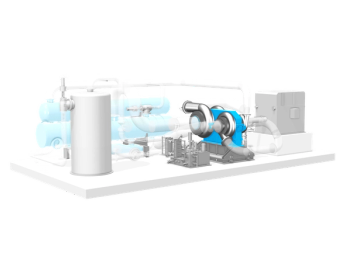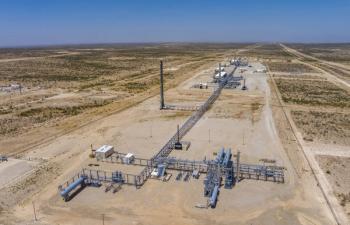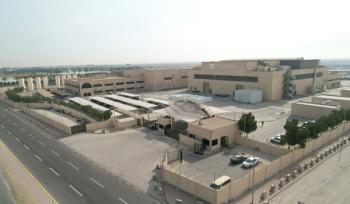
- May/June 2024
- Volume 65
- Issue 3
Myth: Nothing Lasts Forever, Not Even Coatings
Turbomachinery coatings are designed to be an added layer of protection for base materials, but even coatings wear down.
I recently accompanied my wife to a nail salon and watched in utter fascination the level of care and sophistication with which the young manicurists treated and painted my wife’s nails. There were several cleaning steps, surface pre-treatment, and, as far as I can remember, at least three layers of different coatings and goofily colored nail paints. The process obviously has to be repeated every couple of weeks, at a substantial cost. This, I felt, was a little exaggerated, but I was smart enough not to voice my opinion to my wife.
On the other hand, I often see the internals of the compressors, steam turbines, or gas turbines where the blade coatings are in deplorable conditions, with large areas worn away and, in some cases, completely flaked off. So, why can’t we put the same love and care into the coating of a blade that my wife puts into painting her nails? A multi-million-dollar turbomachine certainly deserves to be treated with a lot of care, albeit maybe not as much as my wife requires. The answer is another cliché: Nothing is perfect (except maybe my wife).
The most basic function of a coating is to protect the blade’s base material. But that is not the entire story. Specifically, it is often difficult to find a suitable material that meets all the critical operational requirements for a specific turbomachinery internal flow path application. In these cases, a coating can sometimes be utilized that exploits the physical or chemical advantages of two or more materials. Coatings can be designed to address multiple problems simultaneously, such as wear, erosion, corrosion, and fouling. Similarly, coatings are also often used to reduce blade or casing construction costs by protecting the surface of a less-expensive base metal.
WHAT IS A COATING?
A coating is one layer of one substance over another. This creates a composite system that enhances the properties beyond those of each constituent alone, i.e., the whole is greater than the sum of the two parts. In modern turbomachines, coatings are vital to overcoming many technological limitations. For example, in gas turbines, thermal barrier coatings in combination with cooling are used to allow hot sections of the turbine to heat well above the temperature of what the base metal would be able to handle. Similarly, in compressors and steam turbines, anti-erosion coatings are often used to drastically extend the life of the blades in very harsh operating environments.
There are many types of coatings used in turbomachines. Their selection and application come down to form, fit, and function—what is the machine supposed to do, and what does the design need to protect or enhance?
The most common coatings in turbomachines are used for:
- wear protection
- shielding
- anti-fouling
- erosion protection
- corrosion protection/anti-pitting
- drag reduction
- oleophobic and hydrophobic surface protection
- thermal barrier and heat transfer protection/insulation
- sliding wear
- electrochemical attack
- cosmetic enhancement
Coatings can be made from different materials such as simple metals (e.g., titanium, nickel, and chrome), organics (e.g., Teflon and polymers), high strength/hardness alloys, and various types of ceramics. They can be applied using cold and hot sprays, weld overlays (cladding), dipping, chemical reactions, baking, and chemical/physical vapor depositions.
UNFORTUNATELY, NO COATING LASTS FOREVER
The same forces that a coating was designed to protect against will eventually cause all coatings to fail. The most common coating-failure mechanisms are liquid or solid erosion, mechanical surface wear, corrosion and pitting, flaking due to lack of adhesion, thermal and chemical blistering and cracking, and spallation due to mechanical or chemical incompatibility of the coating layers or base material. Thus, from a turbomachinery-design perspective, a machine cannot be designed to solely rely on the coating to avoid any type of catastrophic failure or performance deterioration. Instead, all coatings are intended to extend the design life and performance of the machine.
However, the base material design must allow the machine to be functional for some time even when the coating has failed. Thus, coatings are an enhancement and not a stand-alone protection. If an internal turbomachine coating wears away, the machine cannot just fall apart because it relies on the coating to properly function. This is reflected in standard machine design standards such as NACE MR0103/ISO 17945, which state that a coating can be used but the base material itself must be NACE-compliant without the coating. Coatings solely serve as an added layer of protection to something that, in its base function, must be adequate by itself.
Finally, when designing a turbomachine’s internal surface and appropriate coatings, one also needs to consider the coating’s mechanical interaction with the base material. Coatings are physically connected to the base material and therefore can have an impact on the mechanical and dynamic properties of the base material. For example, a coating can affect the stiffness and damping of a blade, which can change its natural frequencies, mode shapes, and overall dynamic behavior.
When developing a new coating for a turbomachine or applying an existing coating to a new turbomachinery part, the coating’s function, life, durability, adhesion, wear resistance, and mechanical/chemical properties must be carefully considered. Coatings can significantly enhance a turbomachine’s performance and life but remember that no coating will last forever.
Klaus Brun is the Director of R&D at Elliott Group. He is also the past Chair of the Board of Directors of the ASME International Gas Turbine Institute and the IGTI Oil & Gas applications committee.
Rainer Kurz is a recent retiree from Manager of Gas Compressor Engineering at Solar Turbines Inc. in San Diego, CA. He is an ASME Fellow and has published over 200 articles and papers in the turbomachinery field.
Articles in this issue
over 1 year ago
Q&A: Digital Ecosystems Optimize Plant Efficiency & Safetyover 1 year ago
Carbon Capture and Storage is on the Riseover 1 year ago
Turbo Tour: GE Vernovaʼs Gas Turbine Manufacturing Facilityover 1 year ago
Turbomachinery International: May/June 2024Newsletter
Power your knowledge with the latest in turbine technology, engineering advances, and energy solutions—subscribe to Turbomachinery International today.




